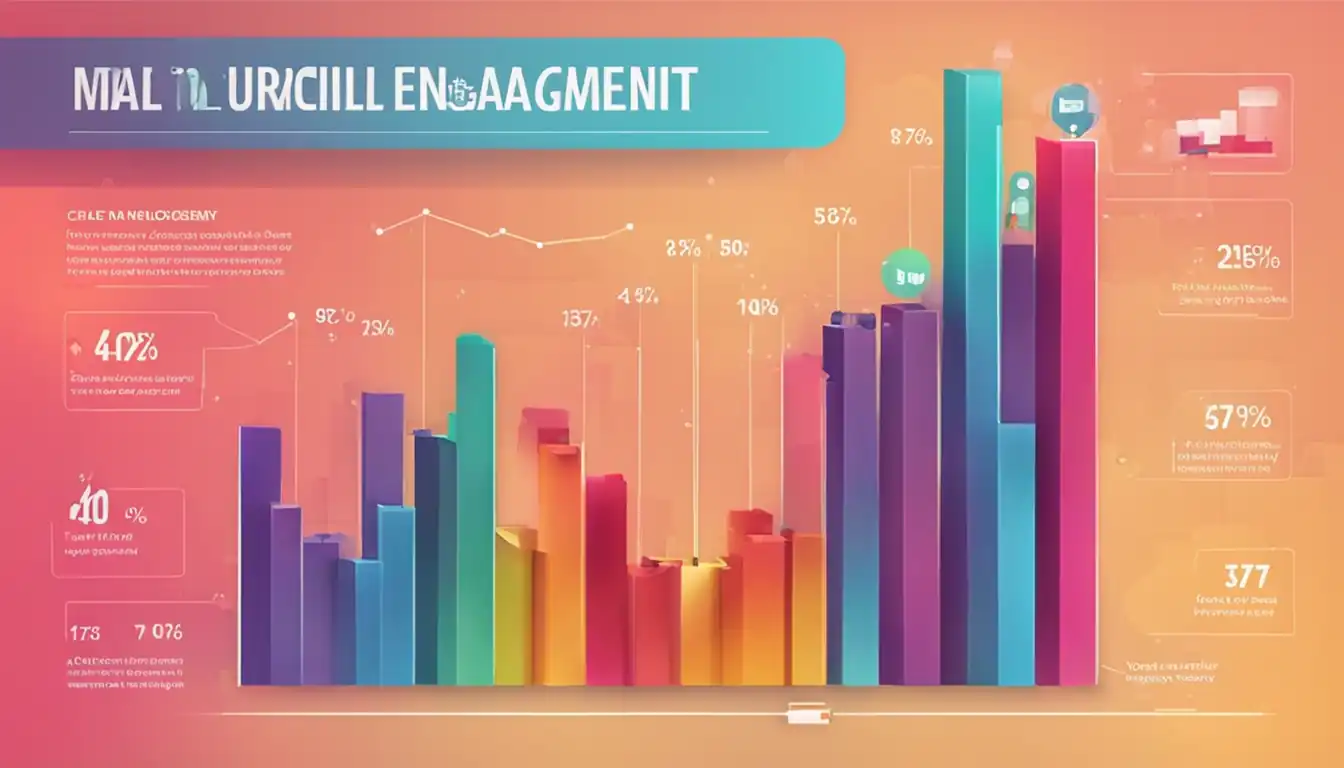Decoding Content Engagement Metrics: A Deep Dive into Understanding Audience Interaction

In the world of digital marketing, understanding how your audience interacts with your content is crucial for success. Content engagement metrics provide valuable insights into what resonates with your readers and how to improve their overall experience. By decoding these metrics, you can tailor your content strategy to better engage your audience and drive results.
What Are Content Engagement Metrics?
Content engagement metrics are quantitative data points that measure how audiences interact with content on digital platforms. These metrics provide valuable insights into the effectiveness of content in capturing and retaining audience attention.
The Basics of Content Engagement
Content engagement metrics can include a variety of indicators, such as:
- Page views: The number of times a page is viewed by users.
- Time on page: The amount of time users spend on a page.
- Bounce rate: The percentage of visitors who navigate away from the site after viewing only one page.
- Click-through rate (CTR): The percentage of users who click on a link or call-to-action within the content.
- Social shares: The number of times content is shared on social media platforms.
These metrics help marketers understand how audiences are interacting with their content and can inform strategies for improving engagement and driving conversions.
Why They Matter in Digital Marketing
Understanding content engagement metrics is crucial for digital marketers because they provide insights into audience behavior and preferences. By analyzing these metrics, marketers can identify which types of content resonate most with their target audience and optimize future campaigns for better results.
Additionally, content engagement metrics can help marketers track the success of their campaigns, measure ROI, and make data-driven decisions to improve overall marketing performance. By focusing on creating engaging content that resonates with audiences, marketers can build stronger relationships with their customers and drive business growth.
Key Metrics to Monitor for Enhanced Engagement
In order to truly understand audience interaction with your content, it is essential to monitor key metrics that indicate the level of engagement. By analyzing these metrics, you can gain valuable insights into how your audience is interacting with your content and make informed decisions on how to optimize it for better engagement.
Time on Page and Bounce Rate
Time on Page: This metric measures the average amount of time visitors spend on a specific page. A high time on page indicates that visitors are engaging with the content and finding it valuable. On the other hand, a low time on page may suggest that the content is not resonating with the audience.
Bounce Rate: The bounce rate refers to the percentage of visitors who navigate away from the site after viewing only one page. A high bounce rate could indicate that visitors are not finding what they are looking for or that the content is not engaging enough to keep them on the site.
Pages per Session and User Interactions
Pages per Session: This metric tracks the average number of pages a visitor views during a single session on your website. A higher number of pages per session suggests that visitors are exploring more of your content, which can lead to increased engagement and a deeper connection with your brand.
User Interactions: User interactions encompass actions such as clicking on links, watching videos, filling out forms, or sharing content. Monitoring user interactions can provide valuable insights into how visitors are engaging with your content and help identify areas for improvement.
By closely monitoring these key metrics, you can gain a better understanding of how your audience is interacting with your content and make data-driven decisions to enhance engagement and drive results.
Tools and Platforms to Measure Content Engagement

In order to effectively measure content engagement, it is crucial to utilize the right tools and platforms. Here are some key resources that can help you track and analyze audience interaction with your content.
Google Analytics: A Go-To Resource
Google Analytics is a powerful tool that provides in-depth insights into how users engage with your website content. With features such as page views, bounce rate, time on page, and conversion tracking, Google Analytics offers a comprehensive view of audience behavior. By analyzing this data, you can gain valuable insights into what resonates with your audience and make informed decisions to optimize your content strategy.
Alternative Tools Worth Considering
While Google Analytics is a popular choice for measuring content engagement, there are also alternative tools worth considering. Some of these include:
- BuzzSumo: This tool allows you to analyze the performance of your content across different social media platforms and identify trending topics in your industry.
- Hotjar: Hotjar provides heatmaps and user recordings to visualize how visitors interact with your website, helping you understand user behavior on a deeper level.
- SEMrush: SEMrush offers competitive analysis tools that can help you benchmark your content performance against competitors and identify areas for improvement.
By leveraging these tools in conjunction with Google Analytics, you can gain a comprehensive understanding of audience interaction with your content and make data-driven decisions to enhance engagement levels.
Strategies to Improve Your Content's Performance
In order to enhance the performance of your content and increase audience engagement, it is essential to implement effective strategies. Here are some key tactics to consider:
Creating Compelling and Relevant Content
Creating compelling and relevant content is crucial for capturing the attention of your audience. By providing valuable information that addresses their needs and interests, you can keep them engaged and coming back for more. Here are some tips for creating compelling content:
- Conduct thorough research to understand your target audience's preferences and pain points.
- Use storytelling techniques to make your content more engaging and relatable.
- Incorporate visuals such as images, videos, and infographics to enhance the overall appeal of your content.
- Keep your content concise, clear, and easy to read to maintain the interest of your audience.
Optimizing Layout and Design for Better User Experience
The layout and design of your content play a significant role in determining how well it performs with your audience. A user-friendly design can make it easier for visitors to navigate through your content and engage with it effectively. Consider the following tips for optimizing layout and design:
- Use a clean and organized layout that makes it easy for users to find the information they are looking for.
- Ensure that your content is mobile-responsive to accommodate users accessing it on various devices.
- Incorporate white space strategically to improve readability and visual appeal.
- Use headings, subheadings, bullet points, and numbered lists to break up text and make it easier for readers to scan through the content.
By implementing these strategies, you can significantly improve the performance of your content and enhance audience engagement. Remember that understanding your audience's preferences and behavior is key to creating content that resonates with them.
Case Studies: Successful Use of Engagement Metrics
How Brands Have Leveraged Data for Improvement
In the realm of content marketing, brands have been leveraging engagement metrics to gain valuable insights into audience behavior and preferences. By analyzing these metrics, companies can make informed decisions on how to optimize their content strategy for better audience interaction and ultimately drive more conversions.
One notable case study is that of Company X, a leading e-commerce brand. By closely monitoring engagement metrics such as time on page, bounce rate, and social shares, Company X was able to identify which types of product descriptions resonated most with their target audience. This led to a significant increase in conversion rates as they tailored their content to better meet customer needs.
Another example is Company Y, a popular news website. Through analyzing engagement metrics like click-through rates and scroll depth, Company Y discovered that long-form articles performed better than shorter pieces. Armed with this knowledge, they adjusted their editorial strategy to focus more on in-depth reporting, resulting in increased reader loyalty and ad revenue.
Lessons from Top Performing Websites
From these case studies, we can draw several key lessons on how top performing websites have successfully used engagement metrics to improve their content strategy:
Data-driven Decision Making: The importance of using data to guide content decisions cannot be overstated. By analyzing engagement metrics, brands can understand what resonates with their audience and tailor their content accordingly.
Continuous Optimization: Successful brands are constantly monitoring and optimizing their content based on engagement metrics. This iterative process allows them to stay relevant and maintain audience interest over time.
Understanding Audience Behavior: Engagement metrics provide valuable insights into how audiences interact with content. By understanding these behaviors, brands can create more engaging and personalized experiences for their users.
Adapting Strategies: Brands that are willing to adapt their strategies based on engagement data are more likely to succeed in the ever-evolving digital landscape. Flexibility is key when it comes to optimizing content for maximum impact.
By learning from these examples and applying the lessons gleaned from top performing websites, brands can harness the power of engagement metrics to enhance their content strategy and drive meaningful results.
Conclusion
Deciphering content engagement metrics is like unlocking a treasure trove of information that can guide your digital marketing efforts. By monitoring key metrics, utilizing the right tools, and implementing effective strategies, you can enhance audience interaction and create compelling content that truly resonates. Learn from successful case studies and apply these insights to optimize your own content performance and achieve your marketing goals.